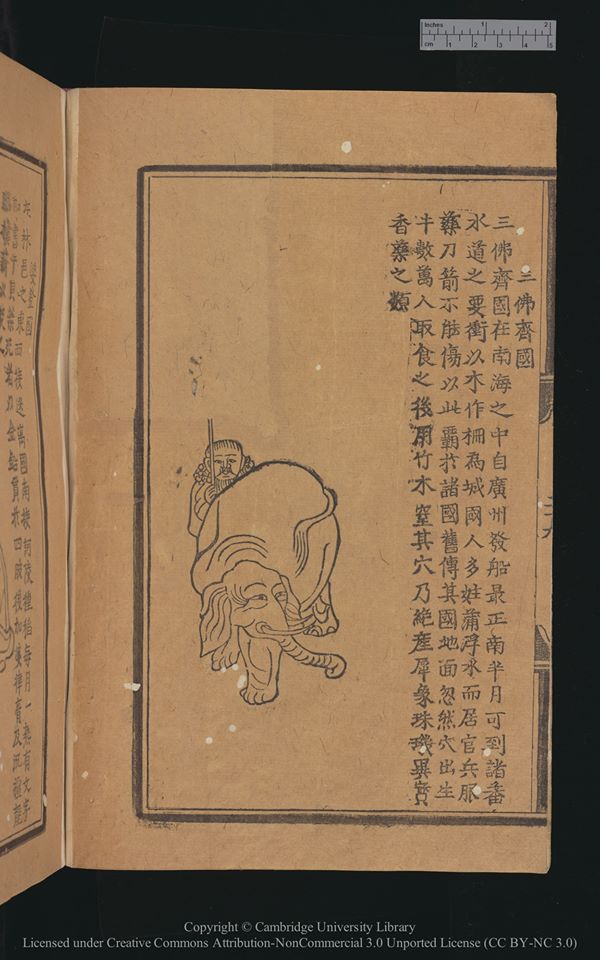Birthplace and capital city of Srivijaya is Cahaya
TL;DR: Cahaya(Chaiya), Thailand the birthplace/capital of Srivijaya and not Palembang? Some questions and answers.
Putting this down here on why I think that the birthplace and the capital city of Srivijaya is Cahaya in present day Thailand. Palembang importance could have raised at later stage after attacks by Chola on Cahaya.
Bear in mind, that I am not a professional historian, just a random "yellow" software developer guy on Internet.
Srivijaya name originated from the word Cahaya?
The name Chaiya is Thai-ed name from its original Sanskrit/Malay name Cahaya, meaning 'light', 'gleam', or 'glow'. Some scholars identify Chai-ya as coming from Sri-vi- ja-ya. Even if one is to "slip of the tongue" the name Palembang, it is no where near Srivijaya. The origin of the Srivijaya name from Cahaya seems very plausible.
One important note here is that we need to pay attention to the word Sanskrit word (श्री)“Sri”. It could also means “light” and this can be literally translated to well…. Cahaya.
A break down of the word
श्रीविजय = Sri (shining/light) + Vi (to) + Jaya (success).
I guess it will be more meaningful and respectful to call it Sri Vi Jaya instead of Cahaya Vi Jaya.
Also it is easier to remember shorter names such as present day names .... PutraJaya, CyberJaya, AmanJaya and TwitterJaya.
Another indicator that one might be interested in is the similarity between the Dong Son culture and Cahaya. Could it be that Cahaya used to be part of Iron/Bronze Age Dong Son culture? Such as the Klang Bell which has the similar decoration to the Dong Son drums found elsewhere in South-East Asia?
Looking at these two pictures. The sun or light in the middle could also be a good indicator on why the early settlers around Cahaya called that place ... Cahaya and subsequently morphed into Srivijaya? Well, this will need more confirmation.
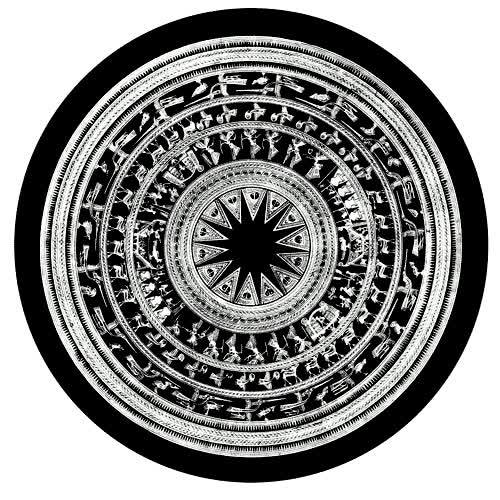
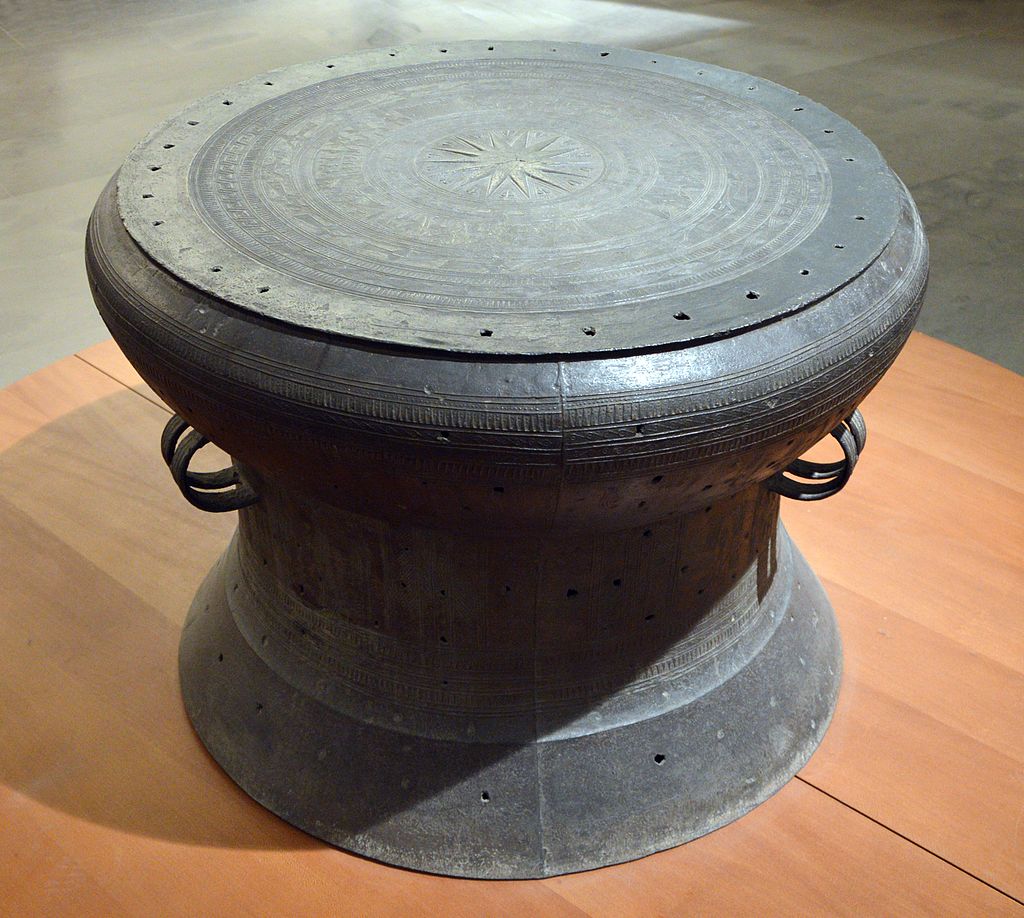
Where did the ancient Chinese place Cahaya(Srivijaya) or 3 Buddha Stupas Kingdom 三佛齊 on map?
From the 坤輿萬國全圖(Khun Yu Wan Guo Quan Tu) map, the location is clearly marked right north of the Melaka Kingdom(满剌加) in the Malay Peninsular(nearby Kra Isthmus).
Also, according to the traveling Buddhist Monk of Tang Dynasty Yi-Jing (義浄), he wrote in his Sik Li Hut Chua(室利佛逝) or literally translated to “The Journey to Sri Buddha”, the location of Cahaya(Srivijaya) is located in the northern hemisphere i.e the Malay Peninsular.
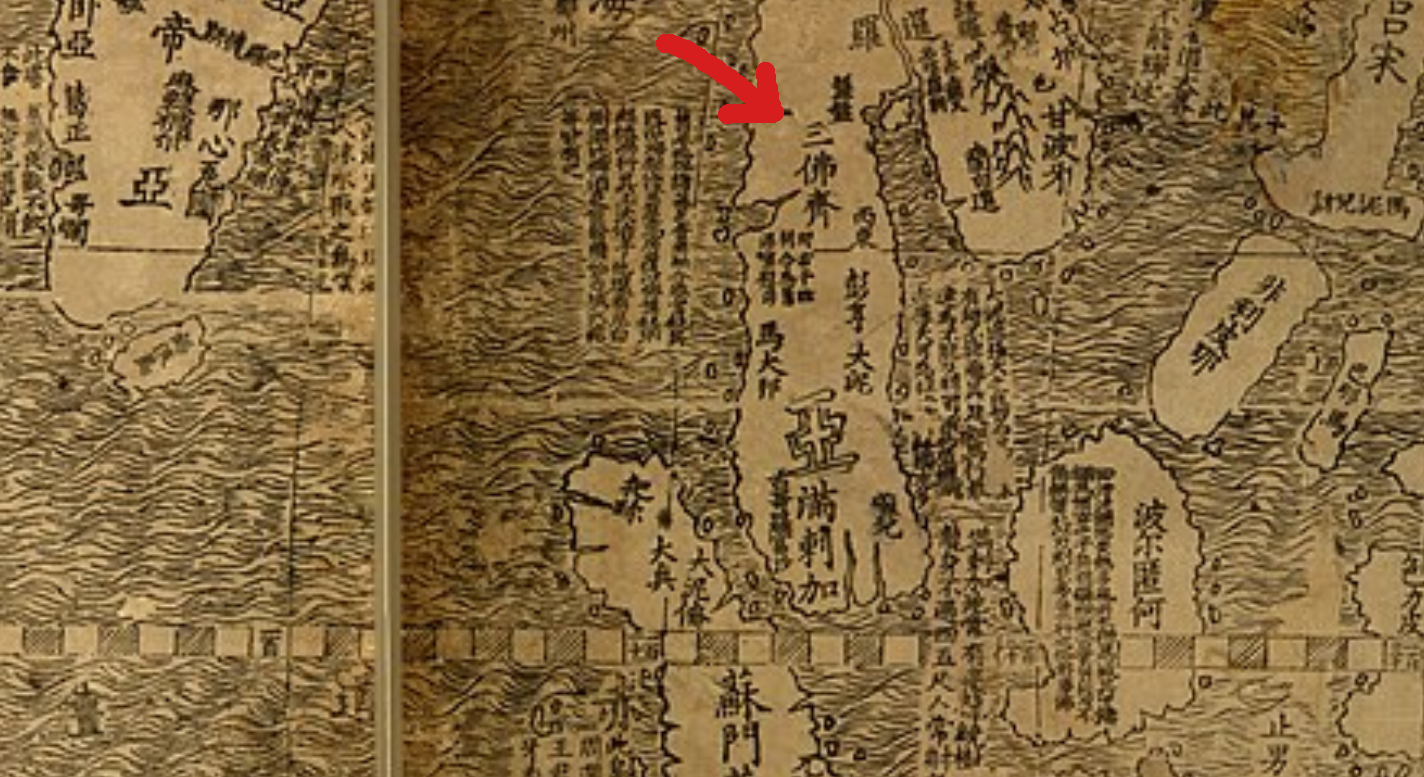
One may argue how the nation of Srivijaya Sann Hu̍t Tsê(Che) Kok 三佛齊國 appear north of 满剌加 Melaka Kingdom which came into being at much later stage? Well, I believed that when the map was created, the information is not being updated. Somehow the name 满剌加 and 三佛齊國 became "entangled" with each other on the historical timeline.
Bear in mind, those are the days before telegram, telephone and Internet. An ambassador might only know his or her country got wiped out after 2 to 3 years later. News traveled slow back in those days.
Why the ancient Chinese named the Kingdom as 三佛齊國 or the 3 Buddhas Arrangement Kingdom?
First, the character 齊 in Hokkien/Min-nan means “the way things are arranged”.
“Dated to the year 697 of the Mahasakkarat era (i.e., 775 CE), the inscription on a Bai Sema shaped stone tells about the King of Cahaya(Srivijaya)having erected three stupas at that site and possibly the one at Wat Phra Borom That.”
There you go, the 3 stupas is significant here and it fits perfectly to the description of Sann Hu̍t Tsê(Che) Kok “三佛齊國” or 3 Buddha Stupas Kingdom.
The location of Cahaya(Srivijaya) Kingdom?
Let us contemplate on this description by the traveling Buddhist Monk of Tang Dynasty Yi-Jing (義浄):
按《南蠻傳》:室利佛逝,一曰屍利佛誓。過軍徒弄山二千里,地東西千里,南北四千里而遠。有城十四,以二國分總。西曰郎婆露斯。(from https://sou-yun.cn/yjlh.aspx?book=TuShuJiCheng&id=1206)
Translation:
According to the Sik Li Hut Chua(室利佛逝), one said "Shi Li Hut Chua" (屍利佛誓). After passing 2 thousand “li” away from Mountain of Kun Tor Lang ….. Kun Tor Lang Sua(軍徒弄山) (Suzuki Takashi of suzukitk.com claimed that it is Con Son Island, Vietnam)
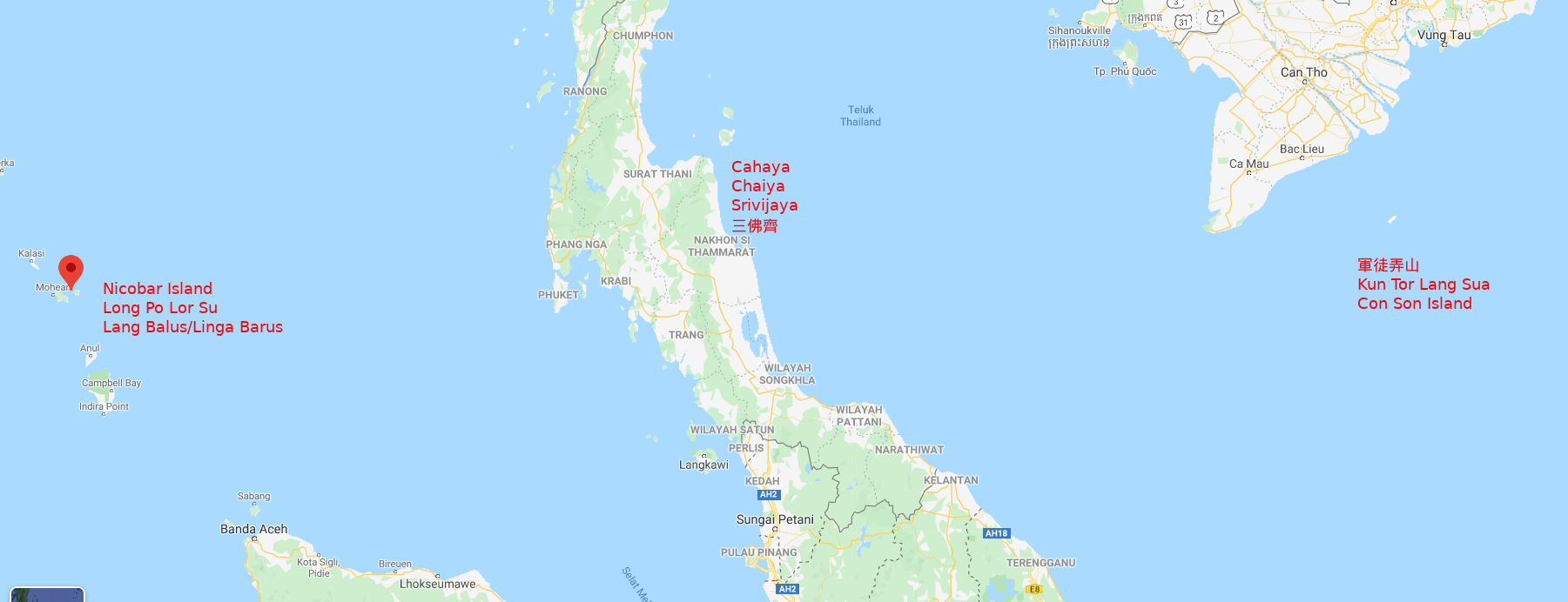
The kingdom has 14 cities, divided into 2 administrative zones. Its territory spans from 1 thousand “li” East to West, 4 thousand “li” South to North. West is called Long Po Lor Su(Lang Balus/Linga Barus) which is understood to be the present day Nicobar Island.
I believed that the 2 administrative zones mean one on Malay Peninsular and another on Sumatera island. Pretty similar to what is Malaysia today. One on the Peninsular and another on part of the Borneo island.
How about the Bukit Kedukan inscription? Ain't that a strong evidence the Palembang is the starting point of Srivijaya?
From my understanding of this translation:
Svasti! Pada 11 hari bulan separuh Vaiśākha tahun 605 Śaka, Dapunta Hiyang menaiki sampan untuk mendapatkan siddhayātra. Pada hari ke tujuh iaitu 15 hari bulan separuh Jyeṣṭha, Dapunta Hiyang berlepas dari Mināṅa membawa 20000 orang bala tentera dengan bekal-bekalan sebanyak 200 peti di sampan diiringi 1312 orang yang berjalan kaki banyaknya datang ke hulu Upang dengan sukacitanya. Pada 15 hari bulan separuh āsāḍha dengan mudah dan gembiranya datang membuat benua ... Śrīvijaya jaya siddhayātra subhikṣa nityakāla!
It is obvious that the expeditionary force arrived from somewhere else to conquer. After having conquered a place, why not write down your victorious story? If I am the king of Srivijaya ... it is not logical for me to think that ... before I start conquering... I better write my story down on the a stone first. This just doesn't make sense. For me, it is a clear evidence that the Srivijaya force came from somewhere else and wrote down their story after conquering parts of South Sumatra, Indonesia.
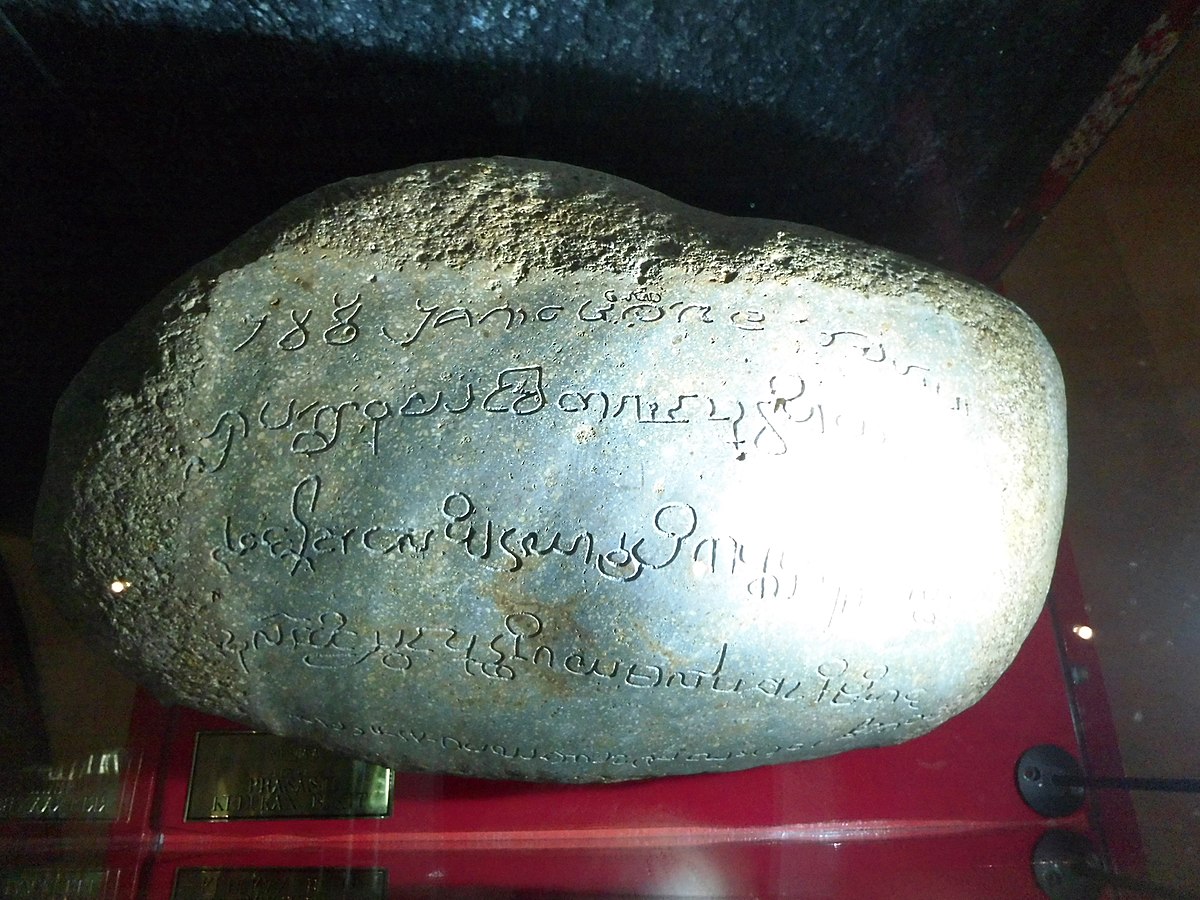
Also, it makes sense to conquer these places from the economic point of view. If I'm already making money connecting East and West at the transit point of Cahaya.... I would like to make more money by conquering other transit points such as those port cities along Straits of Melaka. Hence, this explains the southward expansion of Srivijaya to Sumatra island.
To create such an army, one needs to raise a lot of revenues via taxes, trades, increase food production and make the soldiers fearless. The ancient Chinese described Srivijaya as a nation that raised a lot of cattle to feed their population and their soldiers ate or put on some medicine/potion to make themselves invincible to spear, sword and arrows.
A description of the Cahaya(Srivijaya) by the Chinese.
Srivijaya as recorded in the 异域图志 I Yu Thu Chih (Yi yu tu zhi) (FC.246.5) - The Illustrated Record of Strange Countries. It is a compilation of people, animals, plants and places known to Chinese circa 1430. The only a surviving copy is kept at Cambridge. (https://cudl.lib.cam.ac.uk/view/MS-FC-00246-00005)
三佛齊國
三佛齊國 在南海之中自廣州發船最正南半月可到諸番
水道之要衝以木柵為城國人多姓蒲浮水而居官兵服
藥刀槍不能傷以於此霸諸國舊傳其國地面忽然穴出生
牛數寓人取食之後用竹木窒其穴乃絕產犀象珠琖異寶
香藥之類
Idiomatic English translation:
三佛齊國 在南海之中自廣州發船最正南半月可到諸番水道之要衝:
The three Buddhas kingdom is located in the South Sea, it takes half a month sailing south from Guang Zhou(Canton) to reach there. From there, one can reach many foreign places. This indicates that there may have been an overland route connecting the Gulf of Thailand with the Andaman Seacoast.This route would have enabled traders to avoid piracy in the narrow Strait of Malacca. (from https://en.wikipedia.org/wiki/Chaiya_District)
以木柵為城:
Use wood fence to build their city.
國人多姓蒲:
Most of them surnamed “Por”.
浮水而居:
Houses floating on water.
官兵服藥:
Soldiers eat medicine “藥 medicine” here could mean potion or drug.
刀槍不能傷:
Cannot be hurt by sword and gun(could also be arrow or spear).
以於此霸諸國舊傳其國地面忽然穴:
Expanded their empire fast and dominated many old kingdoms from their capital. “穴” could means cave or a point/location.
出生牛數寓人取食:
Breed thousand of cows to feed their population.
之後用竹木窒其穴乃絕:
after that use bamboo wood to “block” the milk mammary glands.
產 犀 象 珠 琖 異寶 香藥 之類 Produce, Rhinoceros, elephants, pearls, cups, special/strange treasures,incense or fragrant medicine and etc.
Errata
By the way, while I was researching on this topic, I found out that there is a serious error made by Cambridge. They marked page 61 as Srivijaya, which I think is wrong. The people described in page 61 might have the character 佛 in their country name 近佛國... but by all means..this is just a phonetic meaning of their country name...no relationship to Buddhism at all. It could sound something similar to "Kin-Hut-Kok" and most probably they are located somewhere in Philippines or Maluku region, a place with many islands.
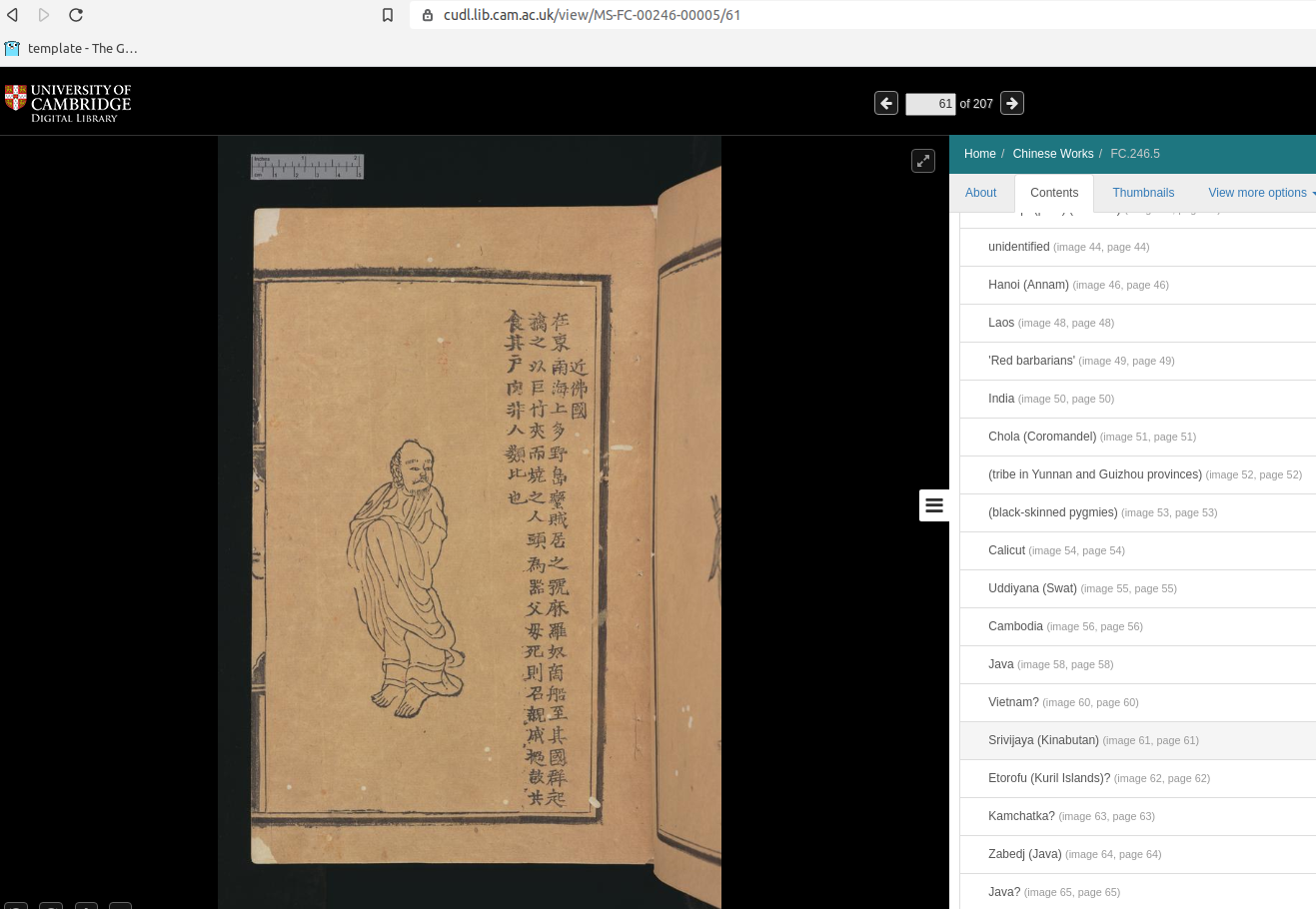

近佛國
按《三才圖》,會近佛國,在東南海上,多野島,蠻賊居之, 號「麻囉奴。」商舶至其國,群起擒之,以巨竹夾而燒食, 人頭為食器。父母死,則召親戚撾鼓共食其尸肉,非 人類比也
They are a head hunter tribe that invite their relatives to feast on their dead parents bodies after the parents passed away. The ancient Chinese wrote that they cook their food with a big bamboo and use human heads as eating utensil. Their location is in the direction of South East from China, nearby a region of 麻囉奴(Maluku?) Also considered sub-human or uncivilized.
Last note:
Bear in mind that if one is to read Chinese from ancient texts and maps. First you need to understand that Mandarin doesn't exist back then. You got to question the time, author and location of the document when it is created. Many translation using today's Mandarin will screw up names of places.
For example "承天萬壽" if pronounce using Mandarin, it becomes meaningless. However if you read it using Hokkien/Min-nan tongue... It sounds like Sin Thinn Ban Siu.... It rhymes with Candi Bongsu at Muara Takus (some claimed that Takus is originally 大古寺 in Hokkien)
or 龍牙犀角 if pronounce using Hokkien.... Long Ga Sai Kak... It rhymes with Langkasuka.
Hope this helps for anyone looking for South East Asian location names through ancient Chinese texts and maps.
Credits and discussion
Many thanks to the clues, pointers and translation information provided by bros Mordff Nit, Liu MX and Mun Kao.
Alright folks, thanks for reading up till here. Anything disagreement that you might have... please see the discussions at :
https://www.facebook.com/groups/malaysian.heritage.and.history.club/permalink/3292199537523470/
https://www.facebook.com/groups/malaysian.heritage.and.history.club/permalink/3299120793498011/
It is private Facebook group, so you need to join the https://www.facebook.com/groups/malaysian.heritage.and.history.club first before you are able to see the post.
References :
https://www.facebook.com/suvarnadvipa.zabag.7
https://www.facebook.com/suzukitks
https://en.wikipedia.org/wiki/KedukanBukitinscription
https://thesiamsociety.org/wp-content/uploads/1967/03/JSS0551cCasparisDateOfGrahiBuddha.pdf
https://ms.wikipedia.org/wiki/Srivijaya
https://www.muangboranmuseum.com/en/landmark/the-stupa-of-phra-maha-that-chaiya/
See also : Explorer language encapsulated in Hokkien
By Adam Ng(黃武俊)
IF you gain some knowledge or the information here solved your programming problem. Please consider donating to the less fortunate or some charities that you like. Apart from donation, planting trees, volunteering or reducing your carbon footprint will be great too.
Advertisement
Something interesting
Advertisement
Tutorials
+16.4k Golang : ROT47 (Caesar cipher by 47 characters) example
+13.8k Golang : Strings comparison
+6.5k Golang : Calculate US Dollar Index (DXY)
+13k Golang : Convert int(year) to time.Time type
+29.7k Golang : How to create new XML file ?
+31.8k Golang : bufio.NewReader.ReadLine to read file line by line
+5.6k How to check with curl if my website or the asset is gzipped ?
+13.3k Golang : Handle or parse date string with Z suffix(RFC3339) example
+4.9k Adding Skype actions such as call and chat into web page examples
+5.1k Google : Block or disable caching of your website content
+8.5k Golang : Find relative luminance or color brightness
+15.7k Golang : Validate hostname

